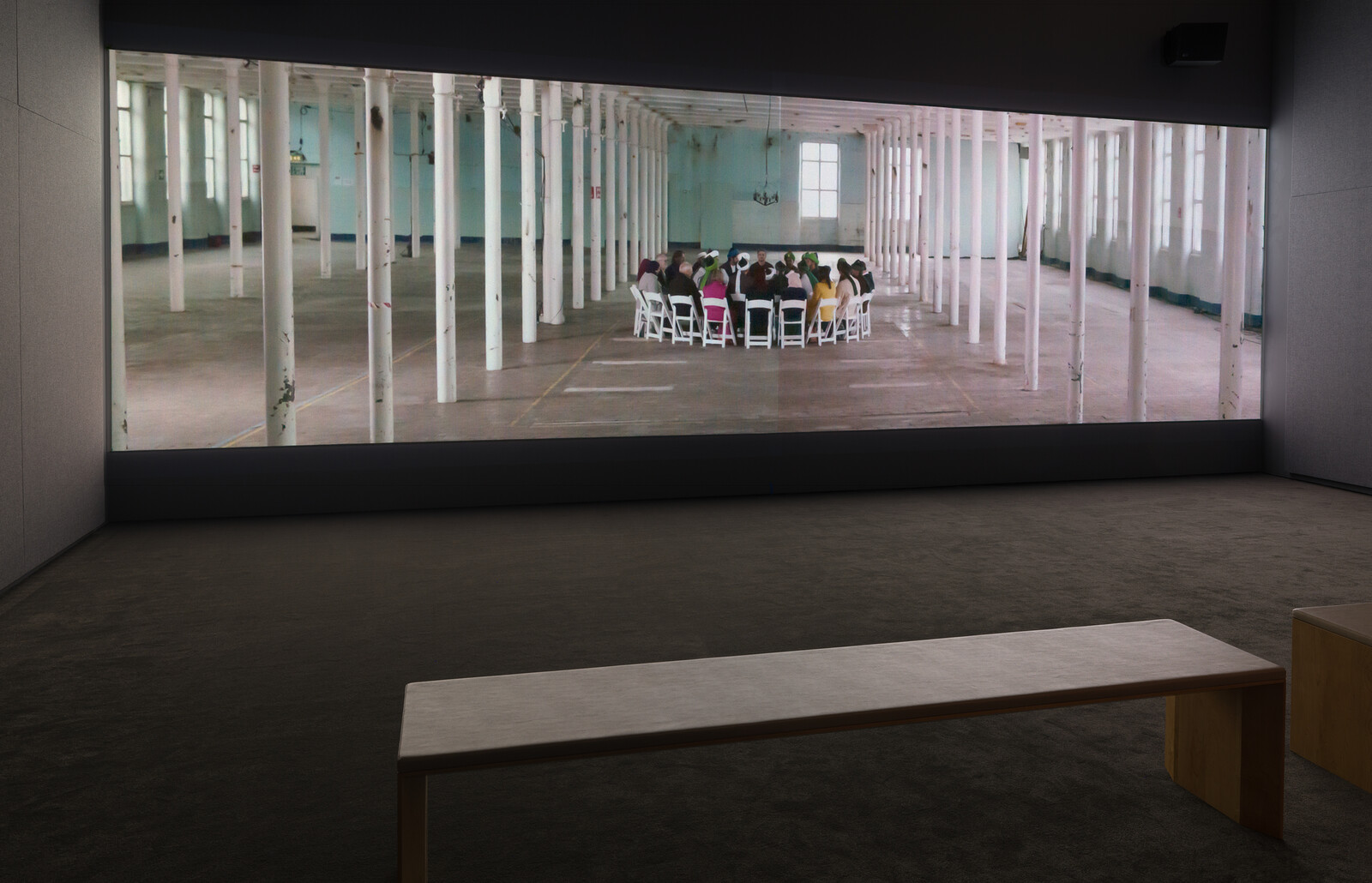Yerba Buena Center for the Arts (YBCA), San Francisco
April 20–August 4, 2019
The dominant form of Suzanne Lacy’s work is dialogue. Deeply collaborative and painstakingly structured without being scripted, the conversations she produces combine formal elements of happenings (Allan Kaprow was one of her mentors) with politically focused content that is often activist in approach and always attuned to power as it plays out in the lives of everyday people. Lacy came of age as an artist during the beginnings of feminist art (she left a career in zoology to study with Judy Chicago), and her work from the 1970s first foreshadowed and later shaped much of what we now call social practice. Her thought has also been deeply intersectional long before most white feminists learned about the concept.
“We Are Here,” Lacy’s first major retrospective, is massive, spanning two very different institutions in San Francisco. (Currently based in Los Angeles, Lacy was previously the chair of what is now the California College of the Arts in San Francisco.) Curators from the San Francisco Museum of Modern Art and the Yerba Buena Center for the Arts co-organized the exhibition, and the two arrays of Lacy’s work in their galleries offer different curatorial approaches to presenting an opus that itself operates largely as a platform for others’ voices.
At the San Francisco Museum of Modern Art (SFMOMA), Lacy’s entire career is tracked, with ephemera and documentation from previous projects sitting alongside a few immersive video installations, including the debut of her most recent work, The Circle and the Square (2017), which deals with race and class in post-industrial Lancashire in northwest England through a series of filmed conversations, ensemble musical performances, and a group dinner in the defunct mill where the participants previously worked. At the Yerba Buena Center for the Arts (YBCA), an institution with a deep ethos of commitment to social engagement, Lacy’s work is presented alongside that of artists and organizations that came after her, whom she has influenced and paved the way for. The YBCA’s approach to envisioning her legacy includes representative pieces from one of Lacy’s most impactful works (and one of the few performances that originally took place in the Bay Area included in the exhibition): “The Oakland Projects” (1991–2001), comprised of eight collaborative projects with East Bay youth. The most famous of these, The Roof is on Fire (1993–94), situated hundreds of teenagers on top of parked cars in a rooftop garage, where they spoke about topics that mattered to them while invited adult neighbors listened. In the YBCA’s cavernous first floor space, these videos are presented alongside other works by contemporary activists and youth art groups, suggesting an intergenerational and ongoing conversation rather than an argument about influence.
For all of Lacy’s attunement to access and power, she is less interested in explicit institutional critique of the art world, instead using art spaces as yet another entry point into public engagement, as with Cleaning Conditions (2013), a restaging of Kaprow’s 1995 contribution to Hans Ulrich Obrist’s instruction-art project “Do It!”: “Sweeping the dust from the floor of a room, spreading the dust in another room so it won’t be noticed. Continuing daily.” In her performance, Lacy used the Manchester Art Gallery as a platform to address labor, gender, and immigration through engaging activists who swept the gallery and distributed “litter” fliers, without directly discussing or intervening with the museum’s own labor practices. (According to Lacy’s website, the Manchester Art Gallery had concurrent conversations about their practices, but these were held in private.) In the press release for “We Are Here,” SFMOMA announced they would be updating and activating Cleaning Conditions, along with Alterations (1994–95), another installation-performance, with local participants; but no information is currently available on the SFMOMA website. This gesture by SFMOMA points to larger issues about exhibiting performance retrospectives that otherwise run largely under the surface of “We Are Here”: What it means to experience the exhibition as a set of performances versus installations; and whether the institution is responsible for animating or recreating this kind of work in order to fully convey it to an audience who may otherwise see these performances as mere documentation of things that happened years ago, perhaps far away.
In a 2012 interview with frieze, Lacy described London’s Tate Modern acquisition of one of her performances, the Crystal Quilt (1985–87), in the form of ephemera and documentation, on view at SFMOMA as part of “We Are Here”: “What’s interesting to me about the process of the Tate acquiring the work is how that work will enter another system, and in this case it’s the museum system. The challenge is how to take a work that had such a profound temporal and contextual siting and decontextualize it, and put it in another location and still represent the intentions and meanings and complexities of the work.”1
Using this rubric, “We Are Here” succeeds as a dialogue between SFMOMA and the YBCA that successfully represents Lacy’s practice as both a set of past works and an ongoing social engagement. And by turning the two institutions into yet another dialogue, “We Are Here” operates less as a single show, or two separate shows, rather than an open question about how to curate retrospectives of socially engaged performance by a living artist: another meta-conversation utterly in keeping with Lacy’s methodologies.
“Suzanne Lacy: Questions & Answers,” frieze (August 28, 2012), https://frieze.com/media/suzanne-lacy-questions-answers.













